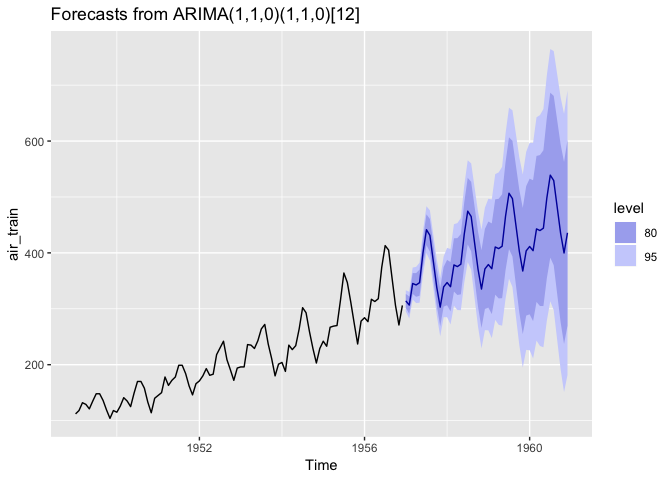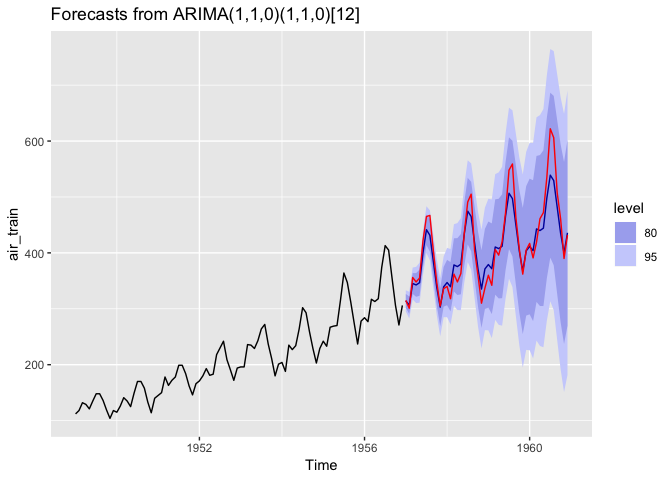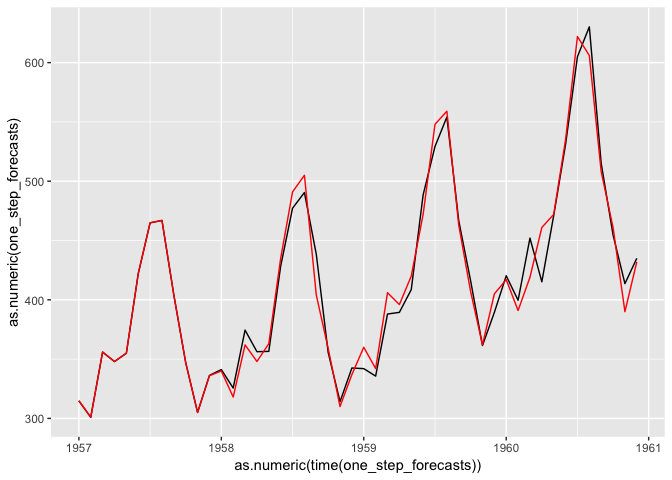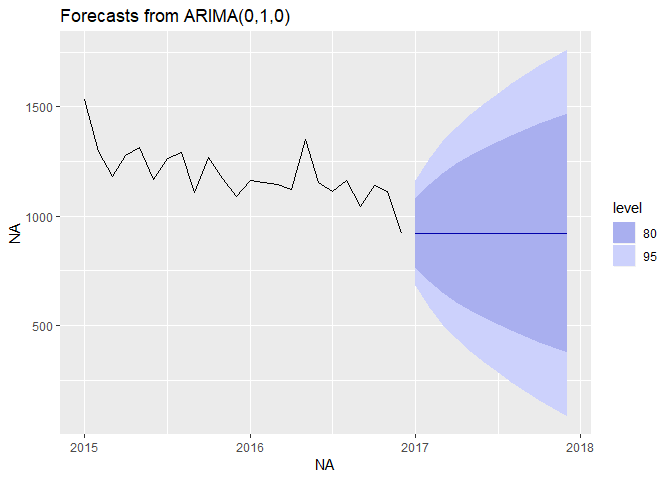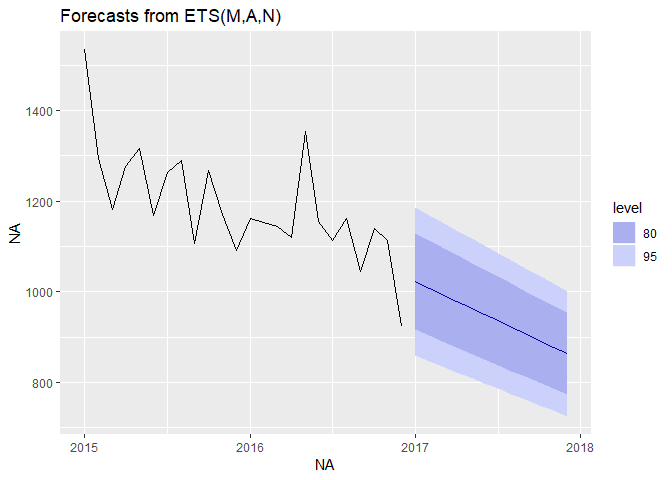Hello all,
in my class we were told to run a forecast model based on ETS and ARIMA and then compare these models to the actual data. I have run the models, but I don't know how to compare them to the actual data. We also have to talk about the uncertainty represented in these models.
Can some one help me with how to run the comparison and explain what is the uncertainty?
thanks.
here is a reprex() of what I have so far, both of these models ran fine so I don't know why the reprex() is showing errors.
# arima instead of exp smooth
arimafit <- auto.arima(terror_byMonth)
#> Error in auto.arima(terror_byMonth): could not find function "auto.arima"
# fit exp smooth model
m_ets = ets(terror_byMonth)
#> Error in ets(terror_byMonth): could not find function "ets"
# forecast ETS 2017
f_ets = forecast(m_ets, h=12)
#> Error in forecast(m_ets, h = 12): could not find function "forecast"
# forecast ARIMA 2017
f_arima<-forecast(arimafit,h=12)
#> Error in forecast(arimafit, h = 12): could not find function "forecast"
# check accuracy ETS
ets_acc <- accuracy(m_ets)
#> Error in accuracy(m_ets): could not find function "accuracy"
# check accuarcy ARIMA
arima_acc <- accuracy(arimafit)
#> Error in accuracy(arimafit): could not find function "accuracy"
# Compair to acctually 2017 data???
#????
#????
Created on 2019-02-11 by the reprex package (v0.2.1)
